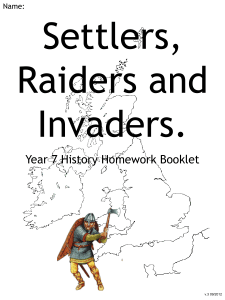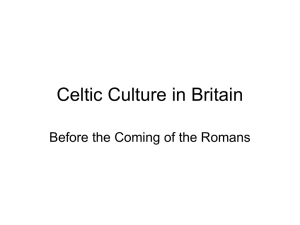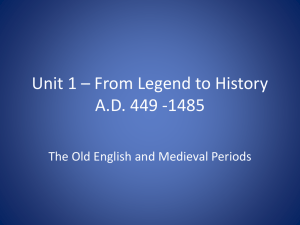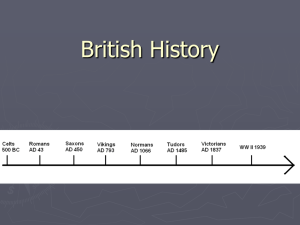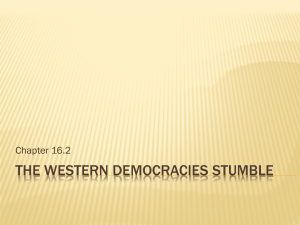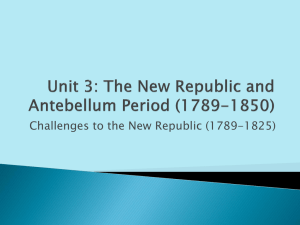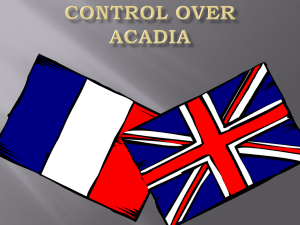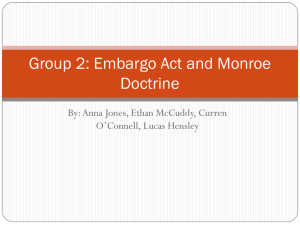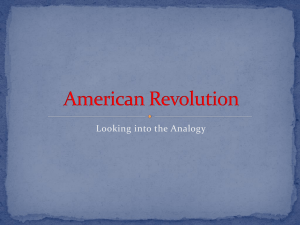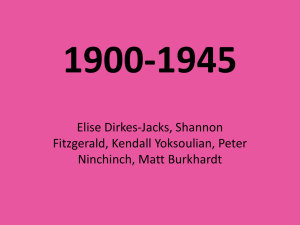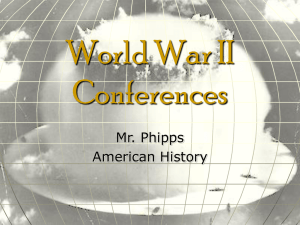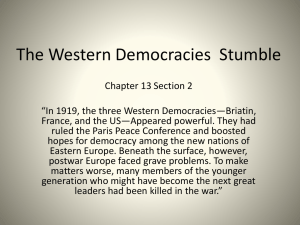Y7_His_HW_Settlers_Invaders-CURRENT
advertisement
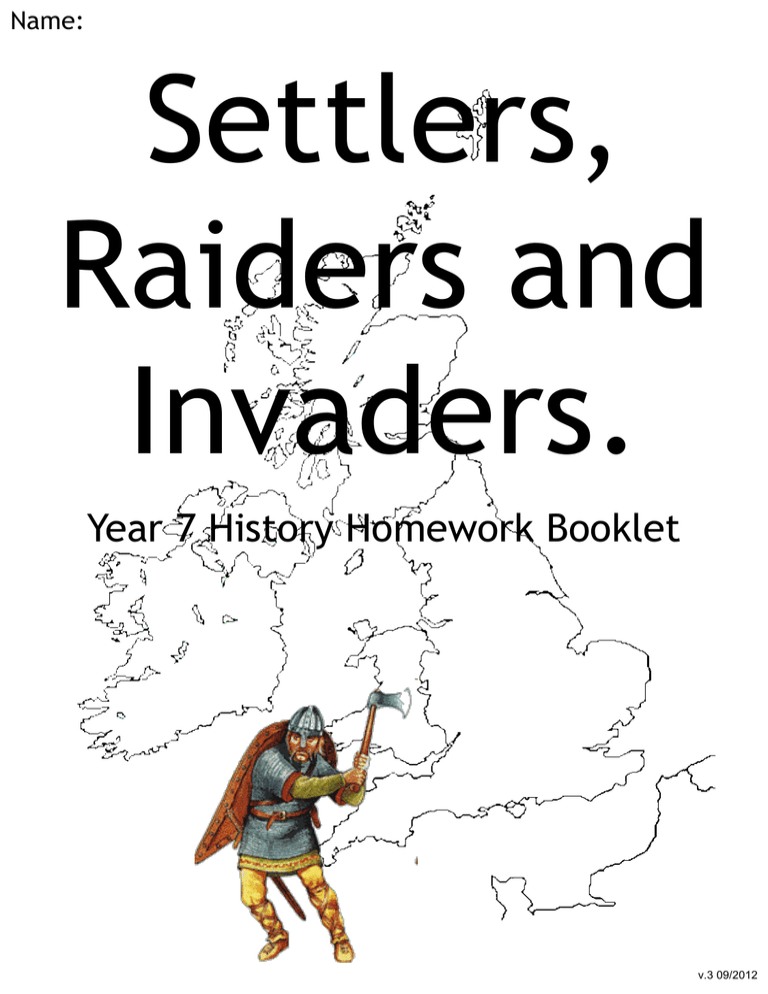
Name: Settlers, Raiders and Invaders. Year 7 History Homework Booklet v.3 09/2012 How to use this booklet Welcome to your first Humanities homework booklet. This one focuses on History, specifically the history of these islands before the events you will study in class. The idea behind this booklet is that you can organise your homework in a way that suits you so that you can do it when you want to do it. You must do all of the activities in bold. But you probably should have a go at the EXTENSION activities as well. This booklet will be taken in and marked by your teacher at the end of the fortnight then it will be put into your assessment book. So long as you finish all the tasks before the final deadline, it doesn’t matter when you do the activities. You can do it ten-minute bursts or in two-hour sessions. It should take you 2-3 hours to complete the whole thing. You can work with your friends (that’s work with not copy from) or on your own. It is important that you read the pages before answering the questions. You will need to use the internet for some of the activities. If you don’t have the internet at home then you can always use the computers in the Library in a lunchtime. Good luck, I hope you enjoy it! This book was given to you on: ____________________________________________________ This book will completed by: ____________________________________________________ 1. Where is Britain? The country we live in is called the United Kingdom of Great Britain and Northern Ireland. It is situated on a collection of islands. The biggest islands are Britain and Ireland. Shade Britain red and Ireland blue. However, our country is not that simple. Our country is actually made up of four smaller countries. These are England, Scotland, Wales and Northern Ireland. Leave England white and shade Wales red, Scotland blue and Northern Ireland green. EXTENSION: Can you find out which national symbols belong to which country? Colour this list the same colours you used for the second map. (Be careful - Some countries have more than 1!) Rose, leek, dragon, thistle, daffodil, shamrock, a red lion standing up, three lions lying down, harp. 2. Who has lived in Britain? Many, many different people have come to live in these islands throughout history. Some have come to live and work and some people have invaded and come to take over. Over the next few pages we are going to meet some of the most famous. Watch out, though! Because some of these things happened a long, long time ago, historians are not always sure whether the things that are supposed to have happened actually did happen, or whether they are just myths and legends. Celtic period Roman period 450AD Medieval period Saxon period 54BC 1066AD 61AD 200 BC 100 1 AD 100 200 899AD 300 400 500 600 700 800 900 1000 410AD 1100 1200 1016AD Viking period 43AD 793AD As you go through the booklet you will need to return to this page to put these labels next to the right time in the timeline. (CLUE: Look at the top right-hand corner of each of the pages.) Julius Caesar comes to Britain Alfred the Great dies. Boudicca’s rebellion. The Romans leave Britain. The Battle of Stamford Bridge ends the Viking Age. Vikings raid the monastery at Lindisfarne. Hengist and Horsa come to Britain. Cnut becomes king of England. Claudius invades Britain 3. Who were the Celts? From 2,000BC Finding out about the past is difficult and the further back you go the more difficult it is. One of the first groups of people to live in Britain and Ireland about who we have some information were the Celts who lived in the Iron Age. The Celts were farmers and sometimes warriors. The lived in groups called tribes. There were many different Celtic tribes in these islands. We call the Celts that lived in Britain ‘Britons’ to tell them apart from Celts that lived in other parts of Europe. We know about the Celts because some of the things they made and used survive today. A lot has been discovered by archaeologists. Also, other things have been written down by historians. By using the Library, books or the internet, see if you can match these Celtic things with their description. (HINT:http://www.bbc.co.uk/wales/celts may help) THING DEFINITION a torc A paint that Celts used to decorate their bodies – especially if they were going into battle. woad A plant that grows in the branches of tall trees. The Celts thought it had magical powers. hill fort These people were at the heart of the Celts’ religion. They were doctors and wise men as well as priests. mistletoe A necklace usually made of bronze or gold to show how rich and important the person wearing it was. druids The type of place where Celts lived. They were so high up to make them easier to defend against enemies. EXTENSION: Design your own Celtic torc and staple it into this booklet. The Celtic Britons were living quite happily, farming, fighting, fishing, mining and trading with other Celts on the continent until 55BC. In that year the Roman Emperor, Julius Caesar, turned up. He brought thousands of soldiers with him and made the Celts in Southern England pay him money. He soon went away again but later another Roman was to turn up and he intended to stick around… 4. Why did Claudius come to Britain? AD43 Hello, my name is Claudius. I am Emperor of Rome. This means that I control all of the area shaded on this map. I am the most powerful man in the world. However, I never wanted to be Emperor! I’d much rather be an historian! Being Emperor is really dangerous! There are lots of people who want me dead so they can take over. Only the Roman army can protect me. The problem is, I’m not really a soldier. They think I’m a bit of a sissy. What I need to do is to win a war and take over some new land to impress them and keep them loyal. Hmm, I wonder… where could I invade? Claudius chose to invade Britain in 43AD. However, in history things are never really that simple. Below are other reasons why Claudius invaded Britain. Colour the reasons that are to do with MAKING CLAUDIUS LOOK GOOD red and the reasons to do with MONEY, green. Britain had lots of useful things like tin. Claudius could make the Celts who lived in Britain pay him taxes. The only other Roman to have come to Britain was the famous emperor Julius Caesar (54BC). If Claudius could take over Britain people might think he had done something that even Caesar couldn’t manage. Claudius could give bits of Britain to his soldiers. The people in Rome really liked to celebrate winning wars. EXTENSION: Can you find out what Claudius called his son? (http://www.bbc.co.uk/history/historic_figures/claudius.shtml might help). Write your answer here._________________________________________________________________________________________ Why do you think he might have called him this? “He may have been called this because________________________ ___________________________________________________________________________________________________________________ ___________________________________________________________________________________________________________________ 5. Why would the Victorians want a statue of Boudicca? 61AD During the reign of Queen Victoria (1837-1901) the government asked a sculptor called Thomas Thornycroft to design a statue of the British Celtic queen Boudicca (You say, “Boo-dik-a”). Read about Boudicca’s rebellion at http://www.bbc.co.uk/schools/primaryhistory/r omans/rebellion. (You need to read all of the sections.) So, why would the Victorians, who lived many, many years after Boudicca died, want to put up a statue of a Celtic queen who lost a battle? Statue of Boudicca on Westminster pier in London. Below are statements about the Victorians and statements about Boudicca. Link the statements to show the similarities between Boudicca and Victoria. Queen Victoria was a very powerful and popular queen. Boudicca was treated very unfairly by the Romans. The name Victoria means ‘victory’. Boudicca nearly defeated the mighty Roman army. The Victorians were very proud of their country. Boudicca tried to protect her country from being invaded. The Victorians were very proud of their army. Boudicca was a powerful queen. Victorians thought of themselves as fair and just. Some people think ‘Boudicca’ means ‘victory’. EXTENSION: Can you find a book in the Library that mentions Boudicca? Write its name here: ____________________________________ ___________________________________________________________________________________________________________________ 6. Why did Hengist and Horsa not leave? The Romans stayed in charge of Britain for around 350 years, which is a long time, especially as they were not invited! However, they did do some good things when they were here. They built fine houses, new towns, better roads and, most importantly, kept the peace. However, by the fifth century things were looking a bit sticky for the Roman Empire. Lots of people were attacking different parts of the Empire and the city of Rome itself was under threat. In 410AD the last Roman soldiers were taken out of Britain in order to go and protect Rome. This meant that the Celtic Britons were in charge again. But it also meant that they were free to fight amongst themselves… c.450AD Hengist & Horsa. (They were twins). Around 450AD a leader of a Celtic tribe, a king called Vortigern, was having trouble with his neighbours, a tribe called the Picts, so he hired some help. He asked two brothers called Hengist and Horsa from Jutland (in what is now Denmark) to bring an army to fight for him. Put the statements below in order to find out what happened next… A. …and demanded more money from Vortigern. B. They wanted to stay and farm because farming in England was better than in Jutland. Hengist and Horsa invited more people from their country to come and live in England… C. People from across northern Europe came to take land from the Celts. They became known as the Anglo-Saxons. Many of the people in England are, at least in part, descended from these Anglo-Saxons. D. Hengist and Horsa brought three ship-loads of soldiers over to Britain to help the Celtic king Vortigern fight against his enemies. E. …they were here to live! Other people from Hengist and Horsa’s homeland saw them taking over land in England and decided to do the same. F. When Vortigern refused to pay Hengist and Horsa more money they decided to use their army to take over parts of England. Instead of coming over to fight… G. After the fighting, Hengist, Horsa were paid by Vortigern. However, they didn’t leave. H. They didn’t leave because they decided to stay in England and farm. Correct Order D C 7. Where did the Anglo-Saxons settle? From 450AD A S J A J S The people who came after Hengist and Horsa were from different parts of northern Europe. The biggest groups were the Angles, Saxons and Jutes. Today we generally call them the Anglo-Saxons. They were good at fighting and took over large parts of Britain, driving the Celts northwards and westwards. They have given us many names for places, especially in England. See if you can match the name of the places to their definition… Essex The kingdom of the West Saxons. Sussex The kingdom of the East Saxons. England The land of the Angles. East Anglia The kingdom of the South Saxons Wessex The land of the Eastern Angles. 8. What can I discover about Alfred the Great? Celts still lived here 849899AD The Anglo-Saxons took over and drove the Celts north and west. Saxon England was divided up into 5 different kingdoms. Use www.bbc.co.uk/schools/primaryhistory/anglo _saxons to label the 5 kingdoms on the map. (Although this website is aimed at Primary school kids we are going to use it in a secondary school sort of a way. Don’t think that you’re going backwards!) A statue of Alfred the Great. The most famous of the Saxon kings was a man called Alfred the Great. Using the same website. Write down (at least) three interesting things about Alfred the Great. ______________________________________________________________________ ______________________________________________________________________ ______________________________________________________________________ ______________________________________________________________________ ______________________________________________________________________ ______________________________________________________________________ ______________________________________________________________________ ______________________________________________________________________ EXTENSION: Can you find out the names of three other Anglo-Saxon kings?___________________________________________________ ___________________________________________________________________________________________________________________ 9. What can I discover about the Vikings? 7001100AD The Anglo-Saxons didn’t have England to themselves for long before another bunch of aggressive northern Europeans turned up; the Vikings. Use http://www.bbc.co.uk/schools/primaryhistory/vikings to answer the following questions. Name the three countries that the Vikings came from. ________________________________________________________________________________ What did “Going Viking” mean? ________________________________________________________________________________ In what year was the first Viking raid on Britain? ________________________________________________________________________________ Why did Vikings attack monasteries? ________________________________________________________________________________ What was the name of the area where the Vikings settled in England? ________________________________________________________________________________ What is the name of famous Viking who became king of England in 1016? ________________________________________________________________________________ Name at least three places, other than Britain, where the Vikings went. ________________________________________________________________________________ EXTENSION: Can you find out what Danegeld was?_______________________________________________________________________ __________________________________________________________________________________________________________________ 7001100AD 10. What can I discover about the Vikings? The Vikings were quite a war-like bunch. Historians believe they know quite a bit about how they lived, sailed, traded and fought. However, sometimes it’s difficult to tell myths from truths. Read some things that have been claimed about Viking warfare: • Some Vikings were called berserkers. They got themselves whipped-up into a frenzy before they went ‘berserk’ in battle. •Some people claim that these berserkers took drugs before battle to make them think that they were invincible. • Some people claim that the berserkers sometimes went into battle completely naked! Imagine how terrified you would be if a big hairy man was running towards you who thought he was so tough he didn’t need any armour! Also, where would you put your eyes? • It has been reported that Vikings sometimes used a particularly vicious way of killing people. It was called the blood eagle. What they did was tear the victims ribs away from their spine and pull out their lungs. This made their back look like a bloody eagle spreading its wings. Yuck! It is also reported that salt was sometimes poured into the wounds to make the death even more painful. Some people say that the Saxon king Edmund suffered this grisly end. (He was later made Saint Edmund and was buried at…) EXTENSION: Where was St. Edmund buried?_______________________________________________________________________ Some Vikings had quite strange and cool names. See if you can match the name to Viking. Erik Bloodaxe A Viking warrior who had an illness that made his bones very weak. He was very clever but weak. This was good because, apparently, his brother was strong but stupid. Sweyn Forkbeard The King of Norway who became king of the Saxon kingdom of Northumbria. He got his name from his reputation as a vicious fighter (and the fact hed probably killed his half-brother.) Ivar the Boneless A Viking who was briefly became king of England. He had a big beard that was split into two. The Viking age finally came to an end when the Saxon King Harold defeated the Viking king Harald Hardrada at the Battle of Stamford Bridge in 1066. Of course, the Battle of Hastings in the same year ended the Saxon age as well. But, you’ll learn all about these things in lessons…
